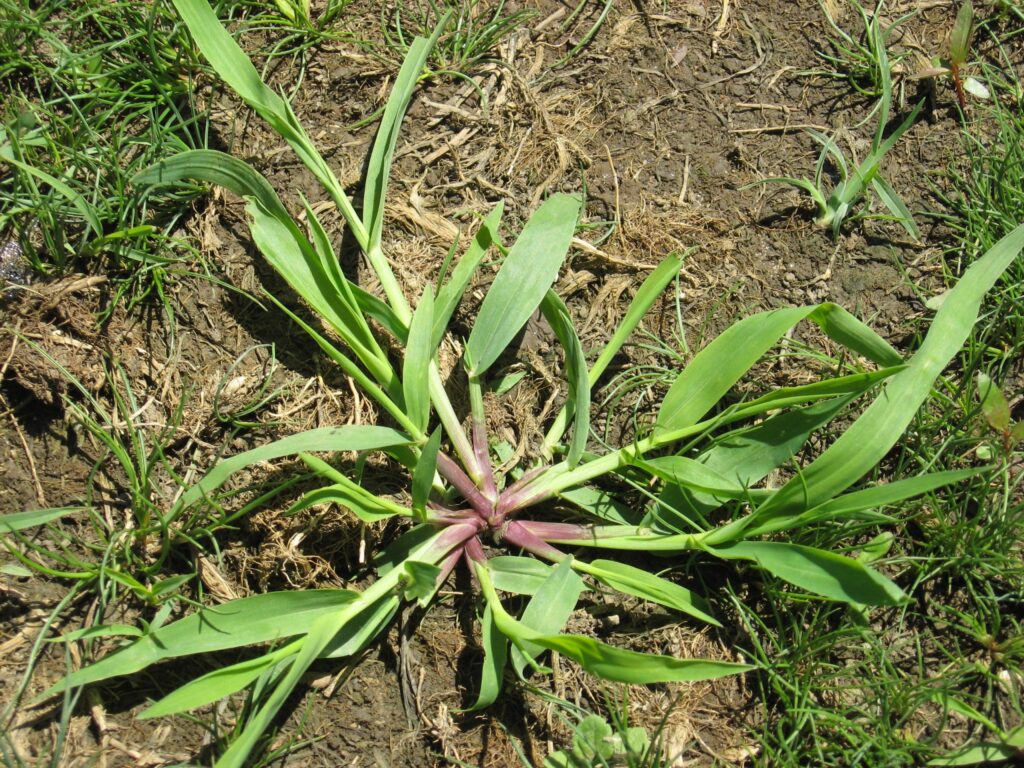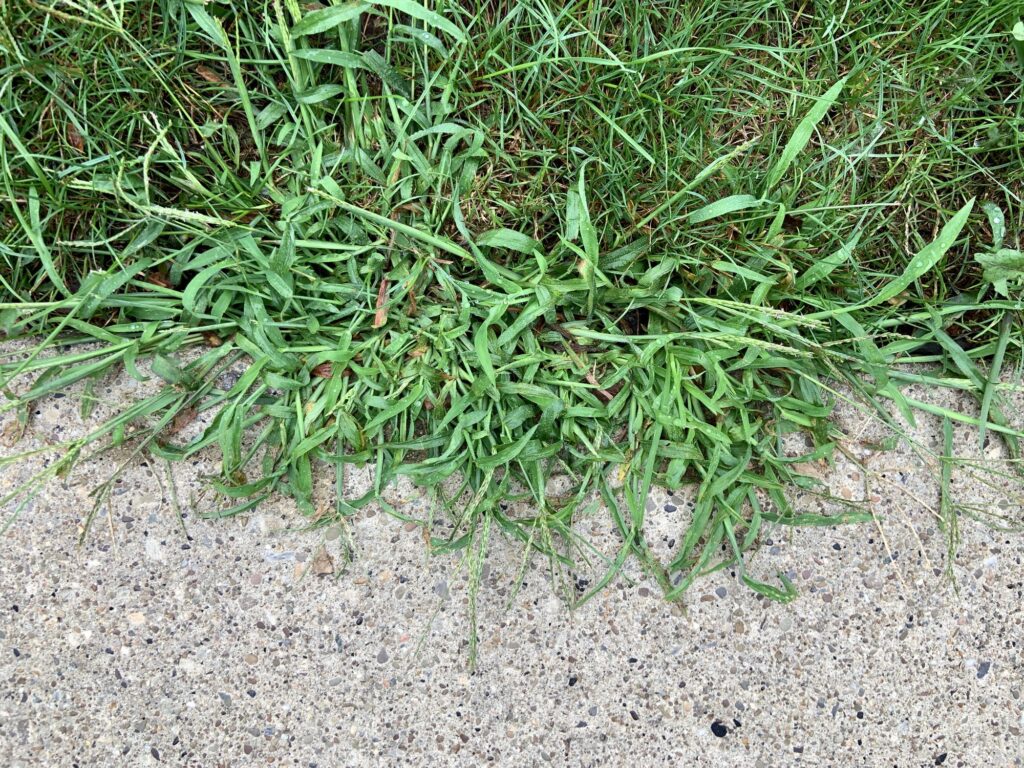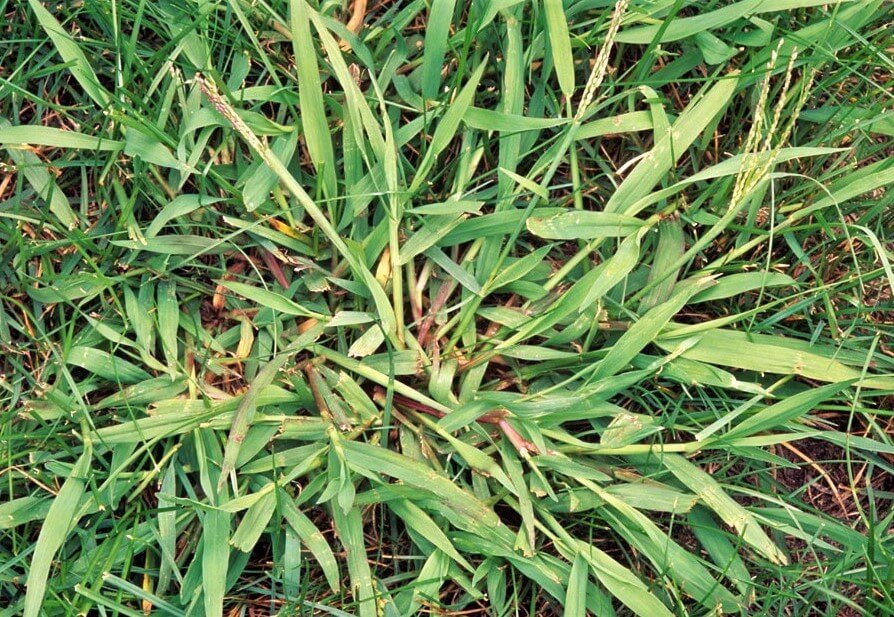HOW TO IDENTIFY CRABGRASS
Crabgrass vs Other Ugly Clump Grasses
Annual (Crabgrass) vs Perennial Grasses
Are those unsightly grasses taking over your lawn crabgrass, or are they a different type of invasive grass? Identifying them is important, as crabgrass is much easier to control than other clump grasses. A single application of the herbicide Drive XLR8 effectively eliminates crabgrass, whereas other grasses require three separate treatments with Tenacity to achieve the same results.
How to Identify Crabgrass vs Other Grasses?
One of the easiest ways to distinguish between clump grasses like tall fescue and crabgrass is by noting their germination periods. Crabgrass typically germinates in May and becomes visible in lawns by mid-June or early July. It stands out with its light green color and tends to grow along lawn edges or in thin, stressed areas.
Yes We Can Quickly Kill Crabgrass After it is Growing!
Many people mistakenly believe that crabgrass can only be controlled with a pre-emergent treatment. In reality, crabgrass can be effectively managed using a special post-emergent crabgrass killer called Drive XLR8. This product eliminates crabgrass without harming desirable grasses, and the crabgrass will die within 3 to 10 days after application.
Crabgrass Appearance
Crabgrass is a fast-spreading annual weed that disrupts lawns with its distinct look and growth pattern.
- Blade Texture: Broad, coarse, slightly wavy edges.
- Color: Light green or yellowish, contrasting with turfgrass.
- Growth Habit: Low, sprawling, with stems radiating from a central point.
- Stem Appearance: Thick, smooth, often reddish at the base.
- Flowering: Finger-like seed heads appear in late summer.
- Density: Forms clumps, thriving in thin or stressed turf.
Yes We Can Kill Crabgrass After it is Growing!
Many people mistakenly believe that crabgrass can only be controlled with a pre-emergent treatment. In reality, crabgrass can be effectively managed using a special post-emergent crabgrass killer called Drive XLR8. This product eliminates crabgrass without harming desirable grasses, and the crabgrass will die within 3 to 10 days after application.
Controlling Crabgrass
in a Lawn
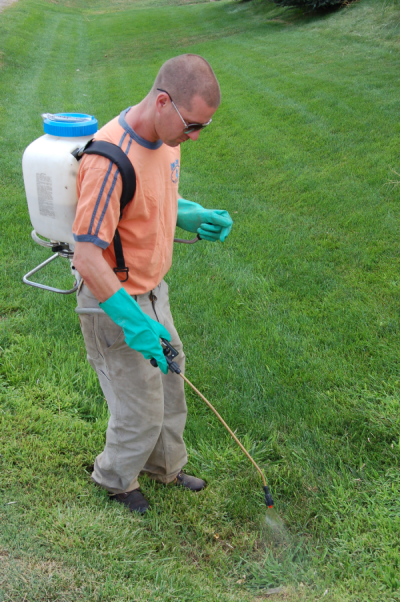
A Closer Look at Crabgrass
Young Crabgrass
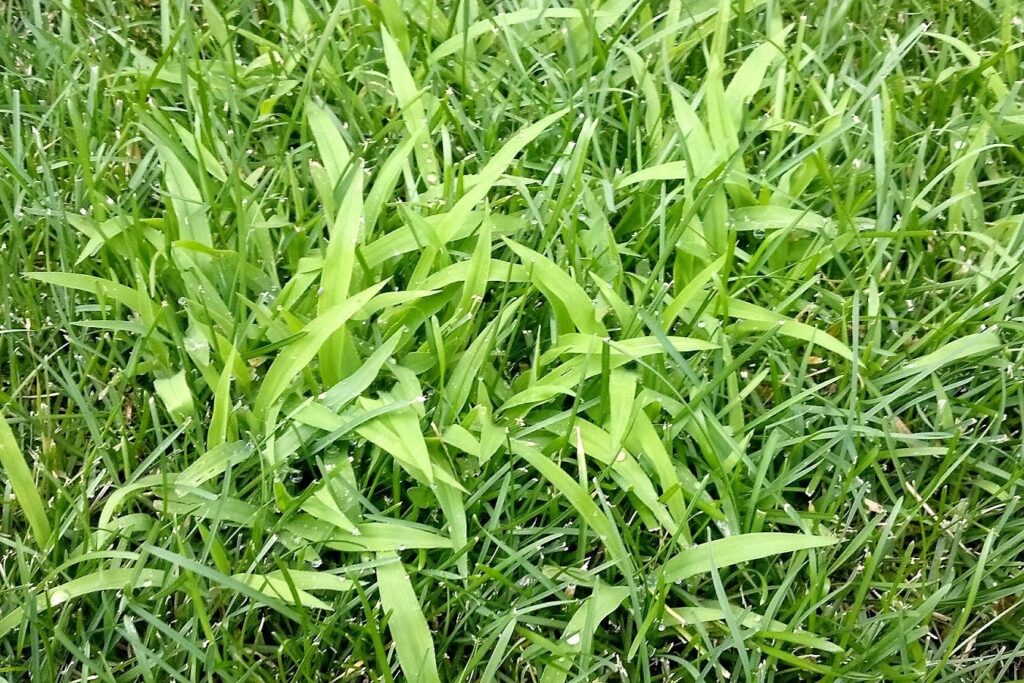
(Click on Image to Enlarge)
Coarse Bladed Grasses That Are NOT Crabgrass
Coarse Fescue (Perennial Grass)
Coarse fescue is often mistakenly identified as crabgrass. This thick-bladed, perennial grass typically grows in clumps within the lawn. A simple way to tell if the grass clump is tall fescue is to observe its growth pattern. If the clump is present year-round, it is likely unimproved tall fescue, brome, or another native grass. However, if the clump starts to grow partway through the season, it is most likely crabgrass.
Coarse Fescue Appearance
Coarse fescue, often referring to older or unmanaged varieties of tall fescue, stands out in a lawn due to its distinct appearance:
- Blade Texture: Wide, rough, and stiff leaf blades, much coarser compared to fine fescue or Kentucky bluegrass.
- Color: Medium to dark green, though it can look less vibrant compared to other grasses in a mixed lawn.
- Growth Habit: Grows in clumps (bunch-type grass) rather than spreading evenly like rhizome-based grasses, leading to patchy areas if not well-maintained.
- Height: Tends to grow taller and faster than other lawn grasses if not regularly mowed.
- Density: Appears less dense, with a more rugged and uneven look, especially in comparison to fine-textured grasses.
Control / Management
Until 2024, controlling tall fescue without harming desirable grasses was not possible. Fortunately, there is now a new method available that utilizes a specialized application technique with a weed control product called Tenacity. Achieving complete control can be challenging, as it requires three applications of Tenacity, with each application spaced seven to ten days apart.
Coarse Fescue
Coarse Fescue
A Closer Look at Coarse Tall Fescue
Coarse Fescue

(Click on Image to Enlarge)
How to Identify Crabgrass vs Other Clump Grasses
Drive XLR8 and Tenacity Pesticide Information Sheets
CRABGRASS TREATMENT
Drive XLR8
Crabgrass and Bindweed Killer Information Sheets
Drive XLR8 weed and crabgrass killer is registered with the EPA by BASF, EPA reg. #7969-272. This post-emergent crabgrass and bindweed killer is also registered with the Colorado Department of Agriculture.
COARSE GRASS TREATMENT
Tenacity
Coarse Fescue / Native Grass
Control Information Sheets
Tenacity is registered with the EPA reg. # 100-1267. Tenacity is also registered with the Colorado Department of Agriculture.
Note: To control coarse fescues in a lawn 3 applications will need to be applied, each spaced out 7-14 days apart.
Crabgrass and Coarse Fescue FAQs
Is it Easier to Control Crabgrass or Coarse Fescue in a Lawn?
When comparing the ease of controlling crabgrass and coarse fescue in a lawn, crabgrass is significantly easier to manage if treated early. In contrast, coarse fescue is more challenging due to its persistence and ability to blend with desirable turfgrass.
Crabgrass is Easier to Control
- Annual Lifecycle: Crabgrass is an annual weed, meaning it dies off each year after seeding. Preventing seed germination with pre-emergent herbicides or crowding it out with a thick lawn can effectively stop its recurrence.
- One Application: There are many post-emergent herbicides specifically designed to target crabgrass without harming desirable grasses.
Key Strategies for Crabgrass Control
- Use post-emergent herbicides to kill actively growing crabgrass.
- Maintain a thick, healthy lawn to prevent crabgrass from establishing.
Crabgrass

Coarse Fescue is More Difficult to Control
- Perennial Grass: Coarse fescue is a perennial, meaning it comes back year after year, making it more persistent.
- Non-Selective Removal: Since it is a grass, most herbicides that kill coarse fescue will also harm desirable turfgrass. Selective removal usually requires multiple applications of a special weed control called Tenacity.
- Deep Roots: Its deep root system makes it resilient to stress and harder to eradicate completely.
- Blending: Coarse fescue may not look dramatically different in texture from other grasses, making it less noticeable but harder to isolate and treat.
Key Strategies for Coarse Fescue Control
- Spot-treat with special weed controls and repeat treatment weekly until successful.
- Remove clumps manually and overseed thin spots with finer-textured grasses.
Unimproved Coarse Fescue Grass
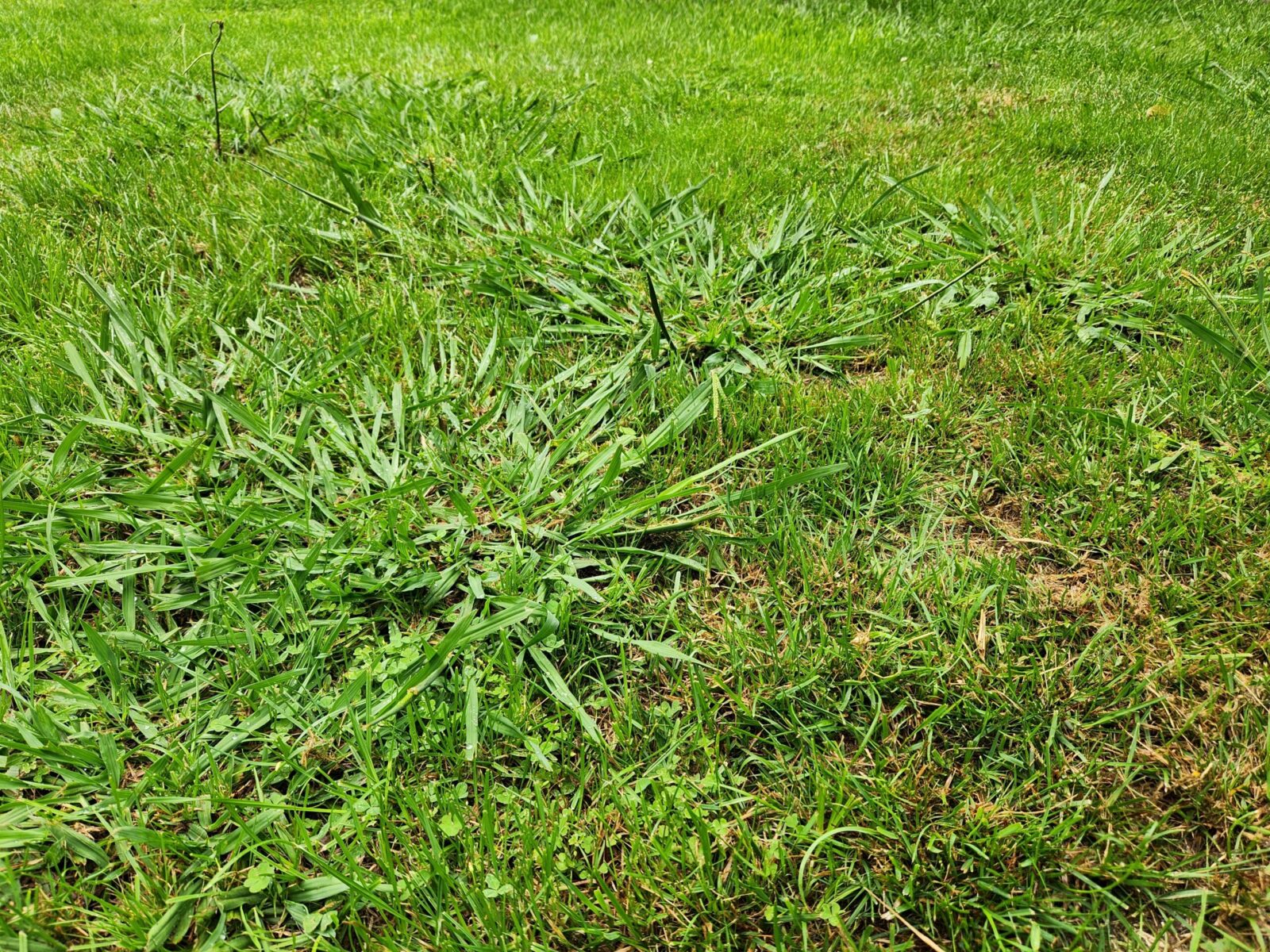
Additional FAQs for Crabgrass and Coarse Fescue
DriveXLR8 is a post-emergent weed control product that effectively targets various broadleaf weeds and annual grasses. It is specifically used for controlling bindweed, crabgrass, and foxtail. One application usually does the trick.
Crabgrass is an annual grassy weed that grows in lawns and gardens, thriving in hot, sunny conditions. It germinates in spring, grows vigorously during summer, and dies in the fall after producing seeds.
Crabgrass thrives in:
- Thin or Stressed Lawns: Bare spots, lawns that are mowed too short, and weak grass make it easier for crabgrass to take over.
- Overwatered or Drought-Stressed Areas: Poor lawn care practices create ideal conditions.
- Hot, Sunny Spots: Crabgrass loves heat and sunlight.
Crabgrass spreads by:
- Producing thousands of seeds per plant in late summer.
- Dropping seeds into the soil, which remain dormant until the following spring.
- Maintain a Healthy Lawn: Keep grass thick and healthy through proper mowing, watering, and fertilization.
- Reduce Bare Spots: Reseed thin areas to crowd out weeds.
Crabgrass is an annual weed that dies off in the fall. However, its seeds remain in the soil and can germinate the following spring if conditions are favorable, such as a thin lawn or short mowing. This can make it appear as though crabgrass returns year after year. If the lawn is thick and healthy, crabgrass seeds are less likely to germinate.
No. Quackgrass is a perennial weed with long rhizomes and a different growth pattern, while crabgrass is an annual that spreads by seeds.
Yes! Keeping your grass at 3–4 inches tall shades the soil, making it harder for crabgrass to germinate.
Yes, crabgrass dies with the first frost. However, its seeds survive in the soil and germinate the next growing season.
Yes, you can:
- Maintain a thick and healthy turf.
- Aerate and overseed your lawn to crowd out crabgrass.
- Use natural alternatives like corn gluten meal as a pre-emergent.
Coarse fescue refers to older varieties of tall fescue or unmanaged fescues with wider, rougher blades than modern turf-type tall fescue. It is durable and drought-tolerant but often considered less aesthetically appealing due to its texture.
Not necessarily. Coarse fescue is hardy and provides excellent erosion control and drought resistance. However, its coarse texture and clumping growth can disrupt the appearance of a manicured lawn.


